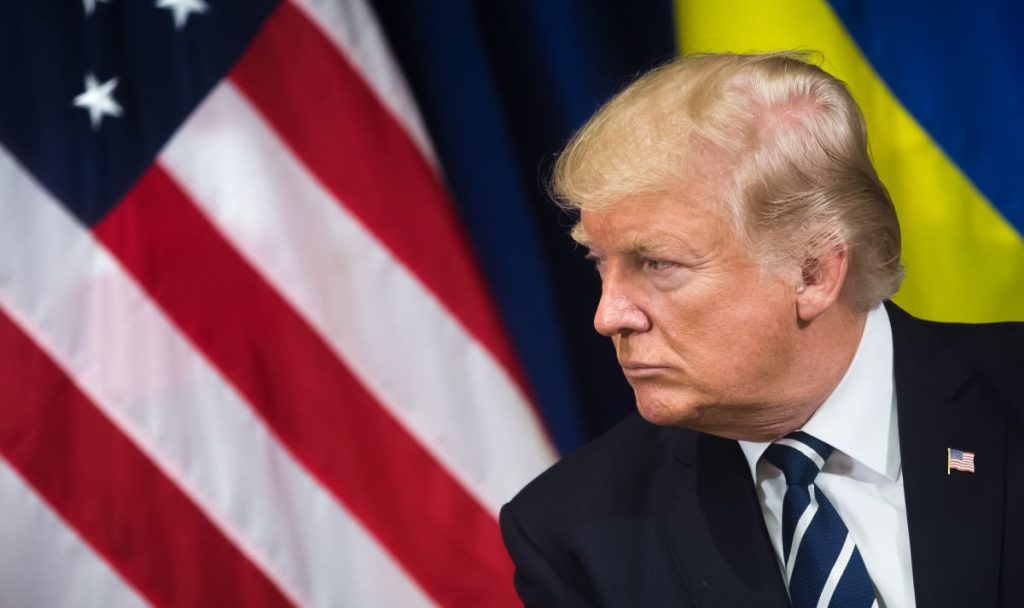The U.S.-China trade war has entered a new phase, with President Donald Trump increasing tariffs on Chinese imports by an additional 10%, bringing the total tariff rate to 20%. The move, announced Monday, comes as tensions mount over China’s alleged failure to curb fentanyl trafficking into the United States. The White House also confirmed that previously delayed 25% tariffs on imports from Canada and Mexico will take effect Tuesday, marking a significant escalation in trade policy.
China Responds with Retaliatory Measures
China swiftly condemned the tariff increase and announced countermeasures, including additional tariffs ranging from 10% to 15% on key U.S. exports such as soybeans, pork, beef, and chicken. These measures are set to take effect on March 10, 2025. Additionally, China has expanded its “unreliable entity” list, restricting exports to several U.S. companies, a move that could further strain business relations between the two nations.
Washington’s decision to double down on tariffs signals a broader shift in U.S. trade policy. The White House has linked the tariff hikes to China’s inadequate efforts to address fentanyl smuggling, framing the issue as a matter of national security rather than trade. This hardline stance adds complexity to an already volatile U.S.-China relationship, with American businesses caught in the crossfire.
The End of a Tariff Pause for North American Trade
While the focus remains on China, Trump reaffirmed that the month-long delay on tariffs for Mexico and Canada will expire Tuesday. The 25% tariffs, originally scheduled to take effect on February 4, were postponed following commitments from both nations to strengthen efforts against cross-border migration and drug trafficking. However, the administration has now deemed those efforts insufficient, triggering the reintroduction of the tariffs.
The move threatens to strain North American trade relationships at a time when supply chains are already facing disruptions. Mexico and Canada are two of the United States’ largest trading partners, and new tariffs could drive up costs for manufacturers and consumers alike. Canada has signaled its intent to retaliate, announcing plans to impose 25% tariffs on $155 billion worth of U.S. goods within the next 21 days. The business community, particularly in the automotive and agricultural sectors, has voiced concerns over the economic ripple effects of increased trade barriers within the U.S.-Mexico-Canada Agreement (USMCA) framework.
A Larger Strategy: The April 2 Tariff Expansion
Trump’s latest trade actions are part of a broader strategy to overhaul U.S. trade policy through reciprocal tariffs. During a press briefing Monday, the president reiterated that starting April 2, the U.S. will impose new tariffs on imported agricultural goods and enact reciprocal duties on all trading partners. The administration argues that these measures will level the playing field for American businesses, but they also risk igniting further retaliatory actions from global trade partners.
Honda, for example, has already announced plans to move production of its new Civic model from Mexico to Indiana by 2028 to avoid future tariffs. Other manufacturers may soon follow suit, but in the short term, increased costs and disrupted supply chains are inevitable.
What’s Next for Global Trade?
The increasing trade barriers is a fundamental shift in U.S. economic policy—one that prioritizes protectionism and national security over globalization and free trade. While the administration contends that these tariffs will bring manufacturing back to U.S. soil and reduce reliance on foreign goods, the short-term impact could include higher costs, disrupted supply chains, and diplomatic tensions.
Financial markets have reacted with mixed signals. While U.S. stocks remain stable, European markets have experienced declines, reflecting concerns over broader global economic uncertainty. Businesses operating in international markets are now facing an era of heightened trade uncertainty. The question remains whether these policies will achieve their intended economic benefits or trigger a broader global trade conflict. As April 2 approaches, companies and governments alike are preparing for the next wave of U.S. tariffs, knowing that further retaliation from key trade partners is all but certain.




